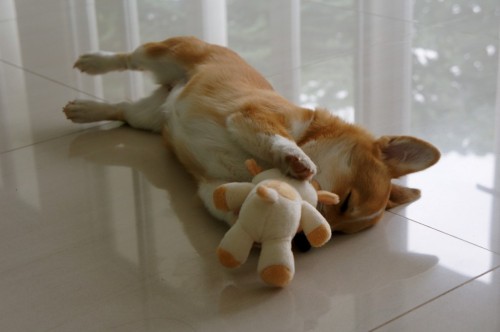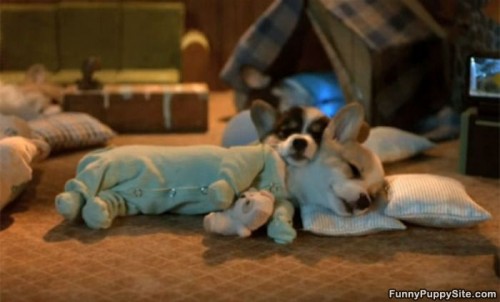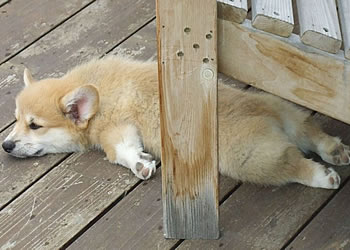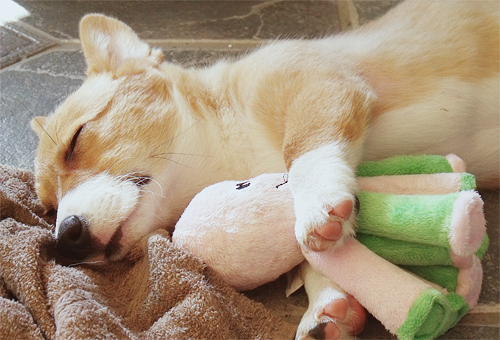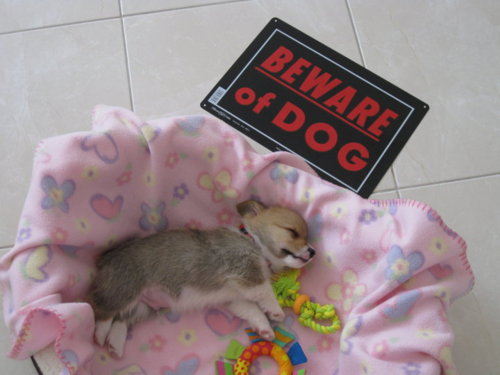LISTS ARE EVERYWHERE these days, as you have noticed. (And should you want to cut straight to the list and the cute corgis, scroll down…) Articles, once nuanced and erudite, have transformed into easy-to-digest groupings of pictures. Blocks of type are now banks of gifs, each of these ostensibly worth a thousand words. Your very Facebook feed is a list, of what all your acquaintances have been thinking about for the past couple of hours. This compulsive categorizing is neither good nor bad, yet it undeniably reflects a change in people. We communicate differently now, relaying many small facts at a time rather than few larger, more thorough ones. Is there a way to quell the impulse to list, or is society heading to a black hole of categories-within-categories, grouping everything and expounding upon nothing? The answer isn’t apparent yet. One thing is clear, though, to me and untold millions of listmakers and list-consumers. Making lists is fun.
I grew up in Manhattan, where everybody lives in a box; since infancy I’ve looked in on millions of windows, stacked atop each other, to identify the furniture or art in each that signals: in here you find this kind of person. I have always loved classifying things, placing them in order according to some newly-discovered attribute, or thinking of new things that belong to new categories only I know exist. This could be the sign of a legitimate personality disorder, though if it is I am a high-functioning case, with relationships and a job. It could be inherited. My mother, who is Dutch, runs to the encyclopedia at every opportunity and has embarrassed me with a lifetime’s worth of reductive statements about what someone must be like if they’re German, French, overweight, a bicycle messenger, black, gay, Jewish. (Side note: Dutch people are ALL organized.) Doubtless I was influenced by comic strips, which I began to read omnivorously when young—their neatness, the way things in them can be explained and wrapped up in the space of just a few rectangles. At middle-school age I was fascinated by Matt Groening’s Life In Hell anthologies, which enumerated the types of girlfriends, bosses, siblings, and so on with a one-panel snapshot of each. Outside the visual realm, favorites among the precocious kids in school were The Book of Lists (by David Wallechinsky et al) and the Guinness Book of World Records; my books of Top Ten Lists from Late Night with David Letterman were precious possessions and occupy a place of honor on the shelf to this day.
As I maneuvered through early adulthood, I enjoyed more things in concentrated doses, made by my contemporaries: sketch comedy shows, McSweeney’s lists, the Internet quiz. Writing a blog, which I did for many years starting at age 25, reinforced my belief that bullet points were respectable. When I entered grad school at 26, young people were revolutionizing the field of library science—categorizing, cataloging, better and faster than before—and flash fiction, a way to tell stories in a condensed, concentrated form.
But still, for me, what was it good for? I chafed at the maze of corporate rules that came with jobs like “web content organizer,” preferring to walk dogs for a living, which I still do. How long before I landed a book deal for 250 pages of lists? It still does not seem worth it to try.
Eventually I became a DJ, and found a lot of comfort in the knowledge that I could—I can—categorize music. Like Nick Hornby’s misanthropic record collector in High Fidelity, I could corral songs that few others realized sounded good together, put them together, and make those odious people around me happy. To speak of less-odious people, I made friends with other DJs who shared my disease and enjoyed seeing it manifest in set lists, hashtag games, spontaneous conversations. A talk between some of us once resulted in a chart describing which Peanuts character corresponded to which Mad Men character. It went something like:
Don………………. Charlie Brown
Peggy…………….. Lucy
Roger Sterling…… Snoopy
Pete Campbell..… Linus
Ken Cosgrove…… Schroeder
Stan………………. Pig-Pen
Paradoxical, that placing things and people into genres can be reassuring, not always limiting or oppressive. We’ve loved astrology, the Myers-Briggs, the Enneagram, and finding out whether we’re a Samantha or a Charlotte. I know I’m not the only one who read the DSM-IV and thought, once per page, “Oh, that must be what I am—that’s why I’m like that!” Whenever writer’s block strikes and I can’t imagine any topic interesting enough, or appropriate enough, for an essay, at least I can make a list. When my boyfriend asked if I wanted to move in with him, he tempered the argument by saying, “If you want, we can make lists of furniture to get.”
Though the syndromes are probably related, I’m not convinced the curatorial impulse is obsessive-compulsive disorder. OCD sufferers fear chaos; they can’t bear the thought of anything being out of order. I will speak only for myself, but a look at any aspect of my life—my kitchen, Mac desktop, handwriting, bank statements, romantic history, sleep schedule, habits of diet and exercise, and so on—will tell the most casual observer that anarchy reigns there. I have no fear of it whatsoever. But making lists, pointless and wonderful lists, does help to tame it.
So it’s no wonder that humans have turned to list culture in this messy post-millennial era, as the threat of Doomsday hovers ever lower. Oddly enough, though, this urge to curate and reduce was with us for a long time before it caught on in such grand fashion. In literary works from the Iliad to Moby-Dick we can find lists, summaries, and catalogs, enumerating things like Greek chieftains and the known species of whales. The big difference was that here the lists sought not to simplify but to complicate, to enrich. And indeed, the complexity that comes with a multimodal form occurs in many authors beloved of my generation: Nabokov’s poetry-in-fiction, David Foster Wallace’s addictive footnotes, Kurt Vonnegut’s drawings. Perhaps least listlike of all are works from the beginning of the twentieth entury: the ecstatic inclusiveness of Walt Whitman, preparing the way for lyrical stream-of-consciousness in Woolf, Joyce, Faulkner. These artists knew—and we who bemoan another Buzzfeed link with twenty pictures of “epic mustache fail” or whatever even as we click on it know—that to limit ourselves to lists is to shut out most of human experience.
And yet one could argue that making any piece of writing, any drawing, any musical composition is like compiling a list: once its creator makes the choice to do it that exact way, all the other choices are closed to her forever. Suppose you’re an artist—Francis Ford Coppola, say, making a film. You decide to make a film about the mafia. Right there, this ruins your film’s ability to be about slaves in the antebellum South or the French Revolution or a magic talking parking meter. Not to say you can’t later make those others, but this film must now be about the mafia. And in it, if Sonny gets killed at a tollbooth he then cannot be killed in a swimming pool, or a cannoli shop, or anyplace else. That conundrum of choice is what makes art frightening, because it’s what makes life frightening. A misstep in art, as in life, is hazardous to your reputation and wellbeing. But if you look at the alternative—to have your life determined by an outside force, not you—isn’t it better to just make the choice, make the art? I think that is what list culture is about: the desire to choose something frightening and wrestle it to the ground, finally confining it to its cage of limitations. A rapidly-widening array of choices threatens to overwhelm us, and the more output humanity makes, the greater the need becomes to subdue it.
The current trends in data visualization—charts, graphs, color-coding—reflect this phenomenon in a different way. Since data are ever more numerous, they are presented more and more as images, not in the more conceptual format of columns of numbers, which people tend to be slower to understand. So it’s possible that lists, having outstayed their welcome in the statisticians’ world, will be evolving into charts and maps in literature too. Prose lists of today are a slight cultural regression, a simplifying measure designed for rushed, attention-deficient, or share-happy audiences. It will be interesting to see where we go from here at the inevitable point when these lists, too, prove impossible to manage.
Maybe lists are not really art, or at least not high art. Like journalism and, really, like most forms of communication, they are a craft. All craft can be done artfully or not, though, and with increasing insidiousness lists are the stuff of our lives. Also, did I mention that they are fun? Comedians list three things in a row to elicit a bigger laugh. When being read a list of something arranged from least to best, our amusement grows with each new item. If you absolutely love to look at sleeping Corgi puppies, it is wonderful that you can go somewhere on the internet to see the 38 sleepiest Corgi puppies ever. You don’t have time anymore to search for them yourself.


